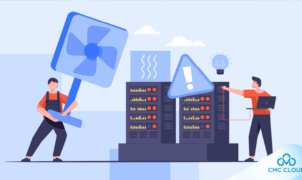
Maintaining a comfortable indoor environment throughout the year is a priority for any homeowner or business. One key factor in achieving and sustaining optimal comfort is a well-maintained HVAC (Heating, Ventilation, and Air Conditioning) system. In this guide, we will explore the importance of preventive HVAC maintenance and provide practical tips to ensure your system operates at peak performance year-round.
I- Understanding the Significance of Preventive HVAC Maintenance
1. Enhancing Energy Efficiency:
Energy efficiency is a cornerstone of preventive HVAC maintenance, contributing to both environmental sustainability and cost-effectiveness. HVAC systems, when neglected, often accumulate dirt and debris, leading to reduced airflow and increased energy consumption. Clogged filters force the system to work harder to maintain desired temperatures, resulting in higher energy bills. Preventive maintenance involves regularly cleaning and replacing filters, ensuring that the system operates with optimal efficiency. This not only reduces the carbon footprint but also translates into tangible energy savings for homeowners and businesses.
2. Extending System Lifespan:
The lifespan of an HVAC system is closely tied to its maintenance history. Neglecting routine maintenance can lead to the premature failure of components, requiring costly repairs or even complete system replacement. On the contrary, preventive maintenance identifies and addresses potential issues before they escalate. Regular inspections, lubrication of moving parts, and prompt repairs mitigate wear and tear, extending the overall lifespan of the HVAC system. By investing in preventive measures, homeowners and businesses can enjoy the reliability of their HVAC systems for an extended period, postponing the need for significant capital investments in replacements.
3. Improving Indoor Air Quality:
Indoor air quality is a critical factor for the health and well-being of occupants. HVAC systems play a pivotal role in regulating air quality by circulating and filtering the air. However, without proper maintenance, these systems can become breeding grounds for contaminants. Dust, mold, pollen, and other allergens can accumulate in ducts and filters, compromising the air occupants breathe. Preventive maintenance includes thorough cleaning and replacement of filters, ensuring that the HVAC system contributes positively to indoor air quality. This is particularly beneficial for individuals with respiratory conditions or allergies.
4. Ensuring Consistent Comfort:
Consistent comfort is the ultimate goal of any HVAC system. Preventive maintenance is the key to achieving and sustaining this comfort, regardless of external weather conditions. Whether facing scorching summer heat or chilly winter nights, a well-maintained HVAC system adapts seamlessly to maintain the desired indoor temperature and humidity levels. This consistency is not only conducive to comfort but also contributes to the overall well-being and productivity of occupants. Preventive measures, such as regular system checks and timely repairs, ensure that the HVAC system remains a reliable source of comfort year-round.
Understanding the significance of preventive HVAC maintenance involves recognizing its multifaceted impact on energy efficiency, system lifespan, indoor air quality, and consistent comfort. Homeowners and businesses alike stand to gain substantial benefits from incorporating preventive measures into their HVAC maintenance routines. From tangible energy savings to improved health outcomes, the value of preventive HVAC maintenance extends far beyond immediate system performance. It lays the foundation for sustainable, reliable, and comfortable indoor environments, aligning with the broader goals of environmental responsibility and occupant well-being.

II- Practical Tips for Preventive HVAC Maintenance
1. Regular Filter Replacement:
The air filter in an HVAC system plays a pivotal role in preventing dust, debris, and pollutants from entering the system and circulating into the living or working space. Over time, these filters can become clogged, hindering airflow and reducing system efficiency. Regular replacement of air filters is a simple yet crucial preventive maintenance task. The frequency of replacement depends on factors such as filter type, system usage, and air quality. Homeowners should follow manufacturer recommendations and inspect filters monthly, replacing them every 1-3 months or sooner if visibly dirty. This not only ensures optimal system performance but also contributes to improved indoor air quality.
2. Seasonal System Inspections:
Scheduling professional HVAC inspections at the beginning of each season is a proactive approach to preventive maintenance. Trained technicians can identify potential issues, clean system components, and verify that the system is prepared to handle the specific demands of the upcoming weather conditions. Seasonal inspections often include checks on electrical connections, refrigerant levels, thermostat calibration, and overall system performance. By addressing concerns early on, homeowners can avoid unexpected breakdowns during extreme temperatures and ensure that their HVAC system is ready to deliver reliable performance throughout the season.
3. Coil and Duct Cleaning:
The coils and ducts in an HVAC system are prone to accumulating dirt, dust, and other debris. This accumulation can obstruct airflow, reduce heat exchange efficiency, and lead to system inefficiencies. Regular cleaning of coils and ducts is essential for maintaining optimal performance. Outdoor condenser coils, in particular, can collect debris from the environment, impacting heat dissipation. Homeowners should include coil and duct cleaning as part of their preventive maintenance routine. This can involve removing debris from outdoor units, cleaning indoor coils, and hiring professionals for more thorough duct cleaning as needed.
4. Thermostat Calibration:
The thermostat serves as the control center for the HVAC system, regulating temperature settings and ensuring comfort. Over time, thermostats may become inaccurate, leading to temperature inconsistencies and potential system overuse. Regular calibration of thermostats is a preventive measure to maintain accuracy. Homeowners should check the calibration periodically and adjust if necessary. Upgrading to a programmable thermostat provides additional benefits, allowing for customized temperature schedules that align with daily routines. This not only enhances comfort but also contributes to energy savings by optimizing temperature settings when occupants are away or sleeping.
5. Lubrication of Moving Parts:
HVAC systems consist of various moving parts, including motors, bearings, and fans. Friction in these components can lead to wear and reduced efficiency. Lubricating moving parts is a preventive maintenance task that minimizes friction, ensuring smooth operation and extending the lifespan of these components. Homeowners should consult the HVAC system manual for manufacturer-recommended lubrication intervals and use the appropriate lubricants. Regular lubrication contributes to energy efficiency, reduces the risk of breakdowns, and promotes the overall reliability of the HVAC system.
6. Seal and Insulate Ductwork:
Leaky ducts are a common source of energy waste in HVAC systems. When ducts have gaps or leaks, conditioned air can escape, leading to uneven heating or cooling and increased energy consumption. Sealing and insulating ductwork is a preventive measure that improves system efficiency. Homeowners can inspect ducts for visible leaks and use duct sealant or tape to address any gaps. Additionally, proper insulation of ducts, especially in unconditioned spaces like attics or basements, helps prevent energy loss. This ensures that conditioned air reaches its intended destination, optimizing system performance.
7. Clearing Condensate Drains:
Condensate drains are responsible for removing moisture produced by the HVAC system. Over time, these drains can become clogged with algae, mold, or debris, leading to water damage and increased humidity levels. Clearing condensate drains is a preventive maintenance task that homeowners should include in their routine. This involves inspecting and cleaning the drain line to ensure unobstructed water flow. By preventing clogs, homeowners mitigate the risk of water damage to the HVAC system and maintain optimal humidity levels within the living or working space.

8. Monitoring Refrigerant Levels:
Optimal refrigerant levels are crucial for the efficient operation of an HVAC system. Low refrigerant levels can indicate a leak or other issues that, if left unaddressed, may lead to system malfunctions. Regular monitoring and adjustment of refrigerant levels are preventive measures that homeowners can take to ensure peak system performance. While homeowners can visually inspect refrigerant lines for signs of leaks, addressing refrigerant levels may require professional assistance. Prompt attention to refrigerant issues contributes to energy efficiency and prevents potential damage to the compressor and other components.
9. Upgrade Air Filters:
Air filters play a central role in indoor air quality and system efficiency. Upgrading to high-efficiency air filters is a preventive measure that enhances filtration capabilities. High-efficiency filters capture smaller particles, including dust, allergens, and pollutants, improving the overall air quality within the living or working space. While these filters may have a higher upfront cost, the long-term benefits include better respiratory health for occupants and reduced strain on the HVAC system. Homeowners should select filters with the appropriate Minimum Efficiency Reporting Value (MERV) rating based on their specific needs and system compatibility.
10. Professional HVAC Tune-Ups:
Engaging a qualified HVAC professional for comprehensive tune-ups is a cornerstone of preventive maintenance. Professional technicians have the expertise to conduct in-depth inspections, identify potential issues, and optimize the entire HVAC system for peak performance. Homeowners should schedule professional tune-ups at least once a year, preferably before the start of the heating or cooling season. During a tune-up, technicians may perform tasks such as inspecting electrical connections, checking system controls, measuring refrigerant levels, and cleaning system components. The investment in professional HVAC tune-ups pays off in terms of prolonged system lifespan, enhanced efficiency, and peace of mind for homeowners.
The practical tips for preventive HVAC maintenance encompass a range of tasks that homeowners can incorporate into their regular routines. From simple tasks like filter replacement to more comprehensive measures such as professional tune-ups, each tip plays a crucial role in ensuring the optimal performance, efficiency, and longevity of the HVAC system. By adopting these preventive measures, homeowners not only enhance the comfort and indoor air quality of their living spaces but also contribute to energy savings and sustainable HVAC system operation.
III- Conclusion
Year-round comfort is achievable with a proactive approach to HVAC maintenance. By understanding the importance of preventive measures and incorporating these practical tips into your routine, you can ensure that your HVAC system operates at peak performance, providing consistent comfort, energy efficiency, and improved indoor air quality. Regular maintenance not only enhances the performance of your HVAC system but also contributes to a healthier, more sustainable living or working environment.








 Welcome to LawyerNote, your premier destination for expert legal counsel tailored to your unique needs. At LawyerNote, we specialize in navigating the complexities of the legal system, offering comprehensive solutions to our valued clients. With a team of seasoned attorneys covering diverse fields including corporate law, family law, and criminal defense, we’re equipped to handle a wide spectrum of legal matters. Our unwavering commitment to excellence, integrity, and client satisfaction sets LawyerNote apart. Whether you’re grappling with a complex litigation case or seeking guidance on business transactions, LawyerNote is your trusted legal partner every step of the way.
Welcome to LawyerNote, your premier destination for expert legal counsel tailored to your unique needs. At LawyerNote, we specialize in navigating the complexities of the legal system, offering comprehensive solutions to our valued clients. With a team of seasoned attorneys covering diverse fields including corporate law, family law, and criminal defense, we’re equipped to handle a wide spectrum of legal matters. Our unwavering commitment to excellence, integrity, and client satisfaction sets LawyerNote apart. Whether you’re grappling with a complex litigation case or seeking guidance on business transactions, LawyerNote is your trusted legal partner every step of the way.




